Uncovering the costly pattern of hundreds of NY police crashes: How we reported it
A police officer sped down a crowded Syracuse thoroughfare at night without sirens, plowing into a medical transport van and leaving the van driver with a career-ending neck injury.
Another officer flew through a Troy intersection at nearly 90 mph in response to a 911 call, smashing into a pizza driver on his way back from a delivery. The pizza driver, a dad with two young sons, didn’t survive.
Over the last decade, hundreds of officers around New York state have run stop signs and red lights, made unsafe road maneuvers in icy weather or rear-ended other police or civilian vehicles.
More often than not, officers behind the wheel face little to no discipline.
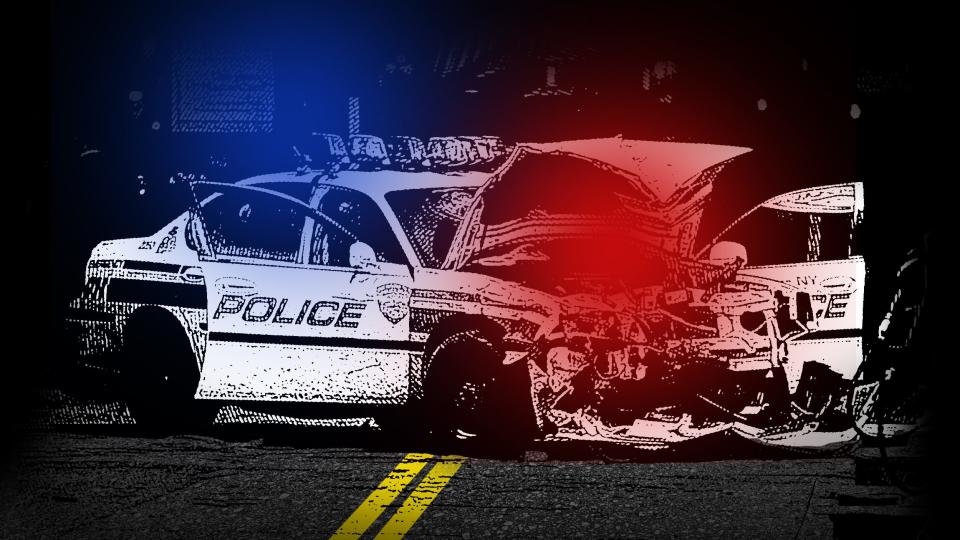
The striking findings and the data supporting them are part of an investigation from the USA TODAY Network-New York, Syracuse University’s Newhouse school and The Central Current into police vehicle crashes in New York — an effort that started with the pursuit of police discipline records, made public in the state in 2020.
It’s the first-ever examination of police vehicle crashes in the Empire State, starting with an in-depth look at the Syracuse Police Department, where 237 officers faced discipline for crashes between 2013 and 2022. Another 701 police crashes during this period ended with no discipline at all for officers involved, even if those crashes caused significant injury to civilians.
The year-long investigation, funded by the Google News Initiative via Northwestern University’s Data-Driven Reporting Project, is the next step in the USA TODAY Network-New York’s commitment to making police misconduct and discipline available to the public and to raising questions about how institutions like our police are serving — or endangering — public safety.
Read the investigation here.
NY police discipline records made public
In 2020, New York changed its laws around police misconduct records, repealing Section 50-a of the state’s Civil Rights Law that effectively hid police misconduct from the public.
Within a week of the law taking effect, MuckRock journalist Beryl Lipton delivered hundreds of Freedom of Information Law requests to police department email inboxes around the state. Soon, Lipton started working with a USA TODAY Network-New York reporting team to pursue responses to these requests.
Lipton now works as police discipline data coordinator for the Network in New York.
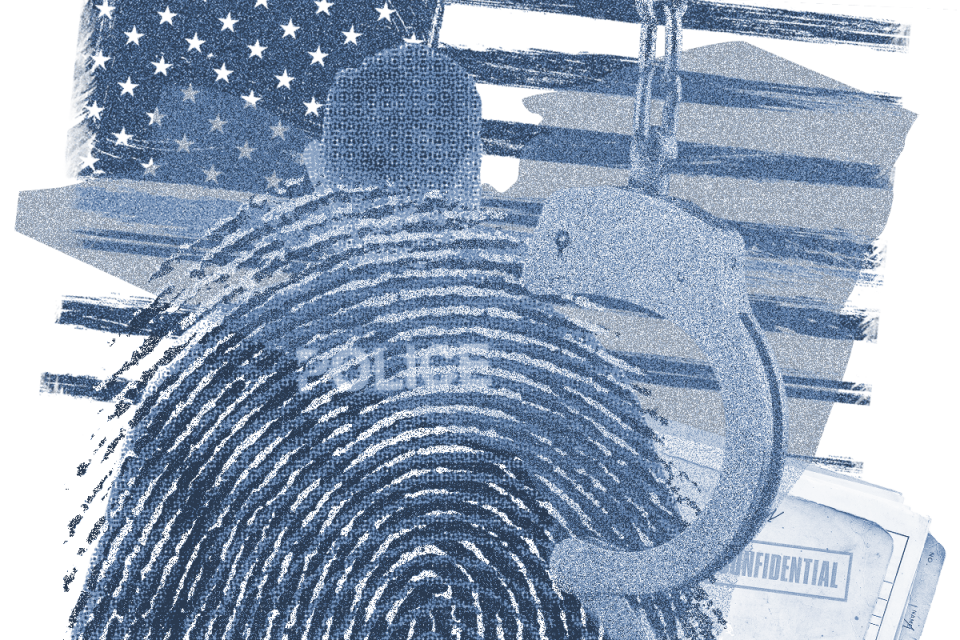
The aim of the project was simple — to seek each department’s disciplinary records, which we could now legally obtain thanks to the repeal of 50-a.
In the three and half years since, Syracuse University students and USA TODAY Network journalists have followed up on the requests, reminding departments of the law and corresponding over the cost and format of the records.
The effort has been challenging. Many departments resist providing the records in their entirety, or at all. The USA TODAY Network has sued several departments in search of these records, including Herkimer Police Department, which released its documents early last year.
As records came in, students read hundreds of pages of documents, pulling out details like the type of conduct, the date, the officer involved and the discipline rendered in a process called “data tagging.”
The set of records, first published as a database by the USA TODAY Network’s Democrat & Chronicle in Rochester in 2021, grew to include 35,000 records from 115 departments as of early 2024, from large urban police agencies to village departments with only a handful of officers.
Explore the 50-a database here.
The reasons for discipline were wide-ranging. They included, for example, harassing someone while off-duty; the accidental discharge of a firearm at a station; failure to follow department policies and reckless driving. Records were added to the public database as they were released and tagged.
During this process, students recognized the growing pile of Syracuse Police Department discipline records related to officers crashing their vehicles while on duty. Most of the investigations into these incidents ended in the same way — the officer only received a written reprimand.
Expanding the reporting for 'Driving Force'
Was the prevalence of these accidents — and the lack of urgency around them — a Syracuse problem? Or would the pattern repeat itself in the disciplinary records of other departments in New York?
In early 2023, USA TODAY Network-New York and Newhouse decided to look for financial support to help their journalists and students answer that question. They applied for an award from the Data-Driven Reporting Project, funded by the Google News Initiative — an effort started in 2022 to elevate document-focused, investigative stories out of local newsrooms.

The pitch? Explore the human and financial impact on communities where police seemed to be driving recklessly without retribution. To do this, we’d expand our efforts to fight for police crash records from around the state.
Our plan included building a public police vehicle crash database, and holding workshops to help regular people and other journalists get the most of our reporting.
In April, Northwestern University announced we’d won a $40,000 award for a year of reporting, starting last summer. We were one of 13 project awardees in 2023.
Bringing past events to life
The reporting effort began in June 2023 with a team of about a dozen reporters, visual journalists and Syracuse University student interns.
Our team went through the discipline records we had, as well as court papers and other state and police documents to locate people who were injured or killed in police vehicle accidents. So far, we've submitted a total of 193 Freedom of Information requests for detailed crash records from police departments, plus about another 20 for things like union contracts and vehicle pursuit policies.
We met in person at Syracuse University twice in 2023, taking time to brainstorm and compare our reporting findings.
Later, interviews with victims of crashes revealed their lasting injuries and unanswered questions about why officers disregarded policies and safety measures, such as using sirens and lights when headed to emergency calls. Some civilians went to court and faced agonizing, years-long legal battles in which they felt the police almost always had the upper hand.
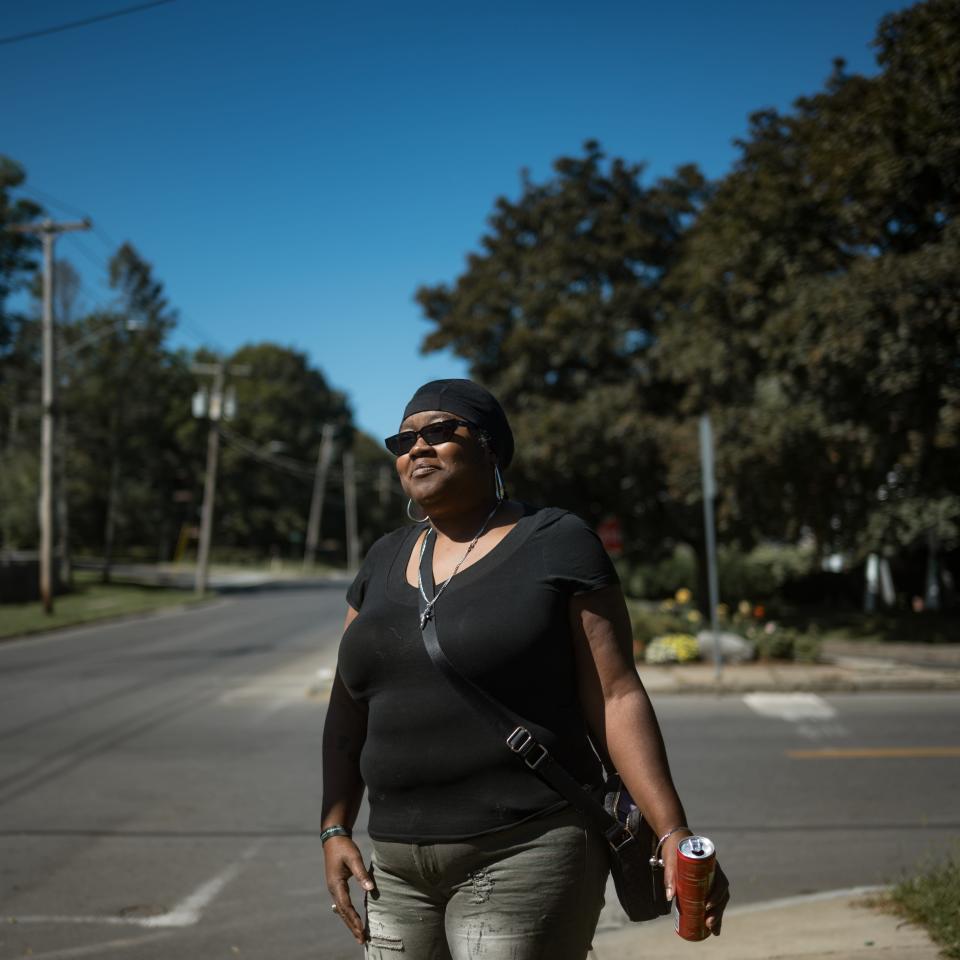
While investigating officers’ driving records, journalists looked into their training. They took a trip to a driving training academy in New York’s Southern Tier, where cadets sped through a series of cones in a timed test to practice executing high-speed driving maneuvers safely. We found that only 3% of a New York officer’s 700 hours of basic training for officers must be devoted to driving.
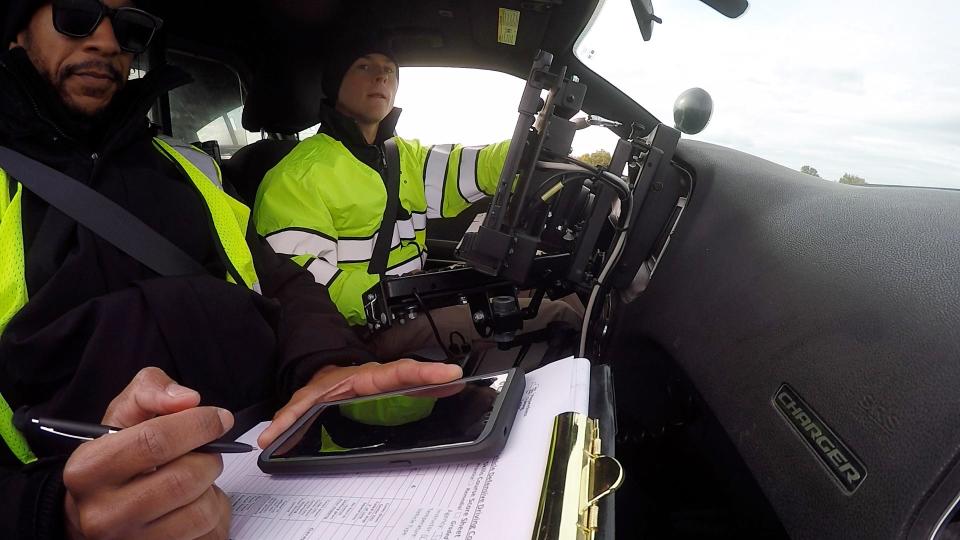
One of our reporting challenges was to recreate past events — surveillance footage and audio was typically not available for the crashes themselves, many of which happened at least a year ago.
Our visual journalists and designers created point-of-view videos of the intersections where the crashes occurred, with text on screen to help readers understand the nature of each crash and how it could have been prevented.
Photographers also sat down with several victims or their attorneys, listening to their stories and capturing images of them at home, at work or at the crash scene.
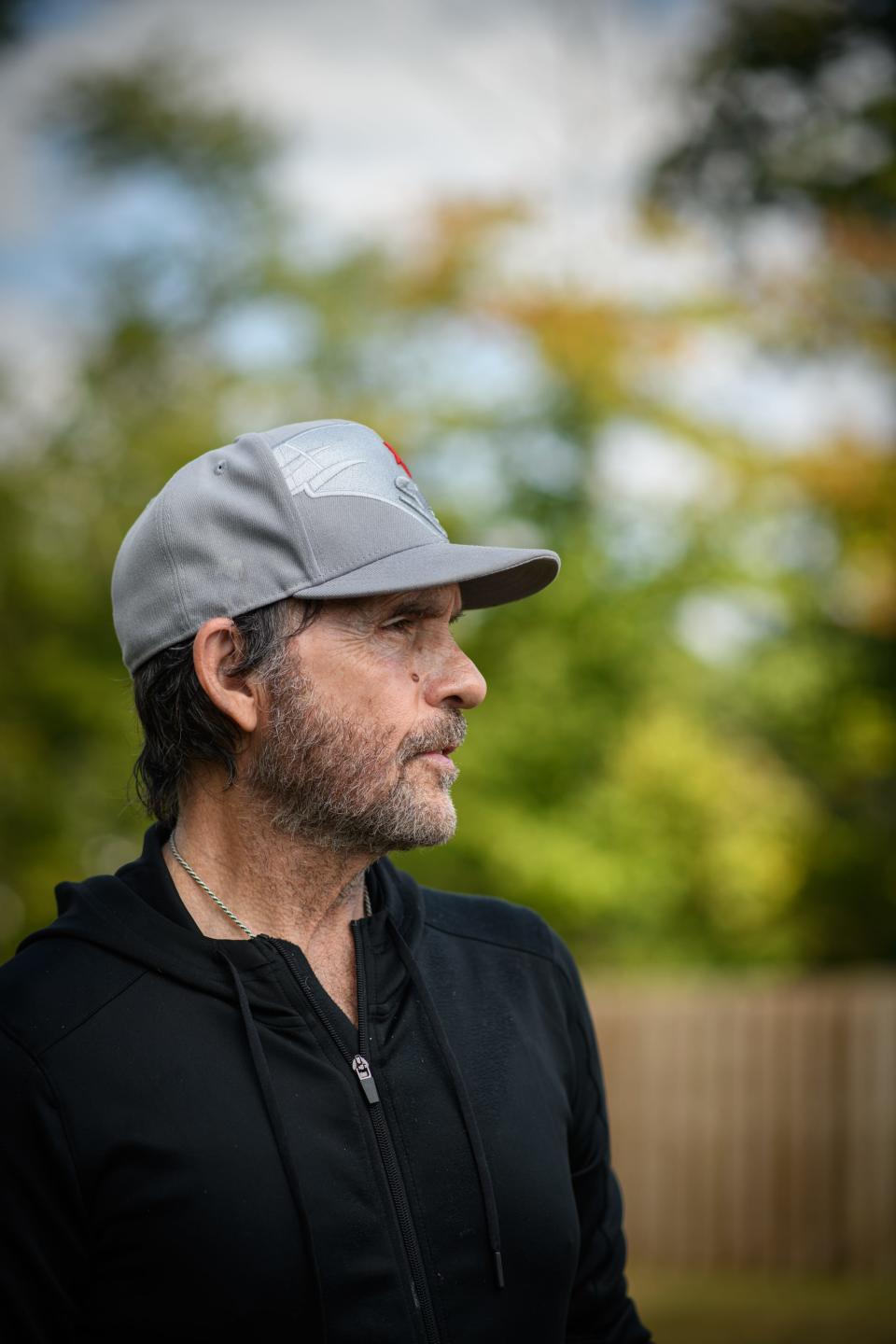
More to come from Driving Force
This work is not over. This series will continue into mid-2024, with a database of crash records and a series of public workshops by mid-year.
We plan to devote our resources and time to ensure that you, our readers, have a chance to inspect your local police department documents, and understand the impact police vehicle crashes have had on your community.

We are still facing heavy pushback from departments across New York as we fight for them to release the disciplinary records as required by law.
This kind of investigative work is critical to journalism’s survival, and we welcome your engagement and participation in it.
If you have a police vehicle crash experience to share with us, or a question related to this topic, please fill out our online form, or scan the QR code with this story in print. Your submission will go straight to our reporters, who may reach out to you for further information.
This article originally appeared on Rochester Democrat and Chronicle: Police car crashes: How we reported on the heavy cost in NY

